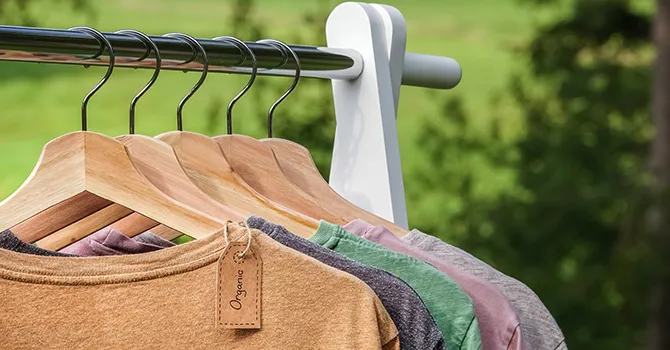“Going green” in fashion has been more of a niche trend in the past but has increasingly become mainstream in recent history. Our recent study found that sustainable apparel can reward manufacturers from a pricing perspective. The resulting boost in profits is a win-win situation – good for the environment and good for business.
Fast fashion brands have fallen under the spotlight for failing on their environmental impact. Demand for sustainable clothing continues to trend upward thanks to an increasing focus on climate change.
There has been an increase in environmentally conscious and mission-driven startups taking off. Allbirds (better things in a better way) and Rothy’s (the sustainable shoe brand) are two examples in the footwear space that are centering their value proposition on being environmentally conscious and on the durability of their products. Traditionally profit-driven companies have also introduced eco-friendly product lines, recognizing the strong demand from consumers and general corporate social responsibility. Most notably, Zara announced that all of its collections will be made 100% sustainable fabrics by 2025. Individual efforts have now been consolidated through the fashion pact. During the G7 Summit this summer, Emmanuel Macron’s fashion pact was joined by 150 brands (from luxury to fast fashion) which are owned by 32 fashion houses. These brands represent annual revenues of $327 billion which represents a quarter of the overall global fashion industry. The fashion industry is definitely turning a pivotal corner.
In our inaugural Fashion Sustainability Study Summer/Fall 2019, we asked over 750 consumers in the United States across different generations and income levels about how sustainability in fashion influences their brand engagement and willingness to pay. The result? Companies that take part in corporate social responsibility (CSR) initiatives can charge a premium. Here are five key takeaways from the study:
- Millennials actively research a company’s CSR behavior
Millennials (defined as ages 23-38 in our study, and making up around 30% of the world’s population) are the most conscientious regarding CSR initiatives compared to the rest (Baby Boomers, Gen X, and Gen Z). They are also the most active when it comes to researching a company’s CSR behavior, likely due to their increased connections with social and global issues. - Consumers see sustainability as a top CSR goal companies should pursue
Although ethical fashion has been important to consumers for a while now, it still ranks behind fair working conditions, treatment and payment of workers, and trade practices, which collectively are the #1 consumer-backed CSR cause. While not tested in our study, we believe that the importance of sustainability in materials and or processes as a top CSR cause has likely increased dramatically over time. - Sustainable fashion: good for the environment, good for business…
Our study finds that environmentally conscious consumers are willing to pay roughly between 10%-20% premiums for sustainable fashion. What is surprising is that the youngest generation, Gen Z (defined as ages 16-22 in our study) has the highest willingness to pay across the board. An impressive 80% of Gen Z consumers would shell out a premium, despite being the newest to the workforce! - Mission-driven companies can charge even more than profit-driven ones
Across the board, companies that made prioritizing the environment part of their company’s mission saw higher willingness to pay. For example, the number of people willing to pay a 10%-20% premium for sustainable fashion jumps from half of the sample to two-thirds when comparing purely profit-driven to mission-driven companies. - A step in the right direction
It is not “all or nothing” – only 12% of consumers expect complete perfection from brands to incorporate sustainability in their clothing lines. Consumers for the most part want to see an effort being made – 42% of respondents expect sustainable materials to include more than 50% sustainable or recycled materials. This ramp up will allow brands to transform their supply chains over time versus a complete overhaul.
The key takeaway for fashion brands
Sustainability is no longer an option, it’s an imperative, especially as consumers will demand that brands stay relevant for every future generation. Macron’s fashion pact might have pushed more established brands toward incorporating more sustainability into their practices, but there is an additional reason why they should embrace this change. By understanding the willingness to pay for different value drivers across target consumers in greater detail, companies can be confident that price changes will positively impact their bottom lines.
Enjoyed reading our article? You may also find this interesting:
